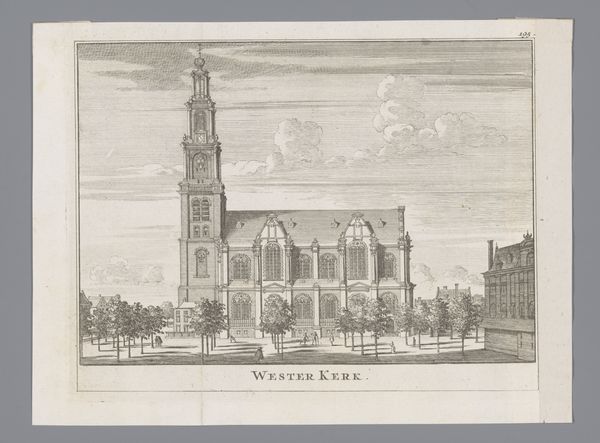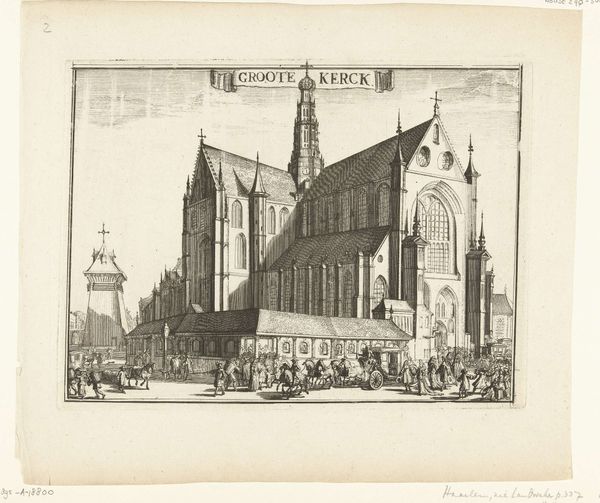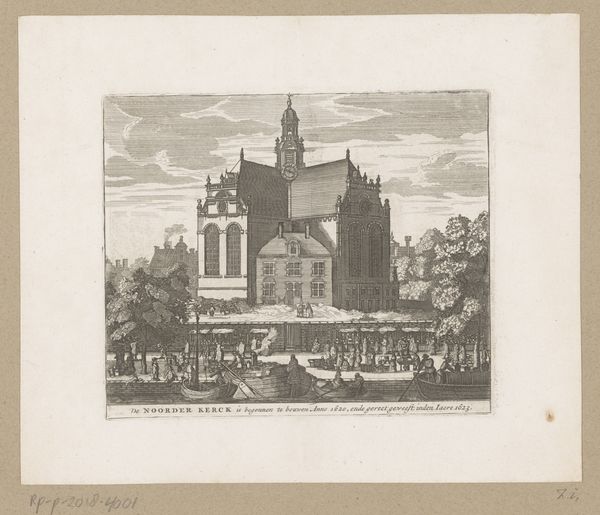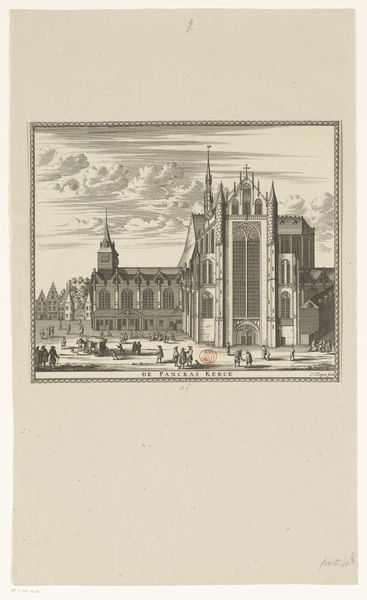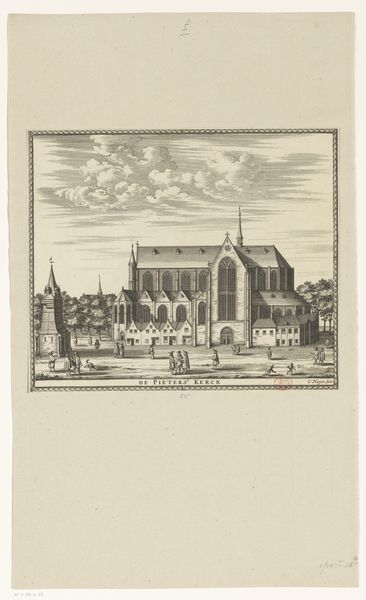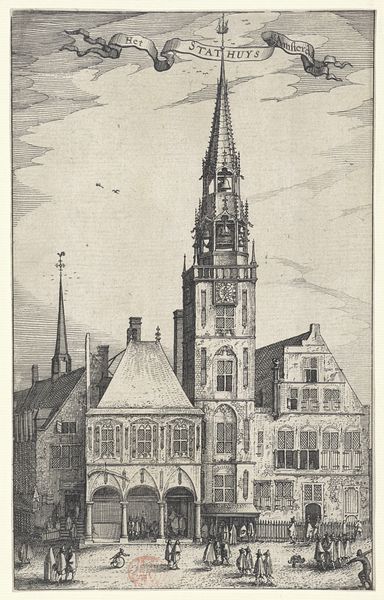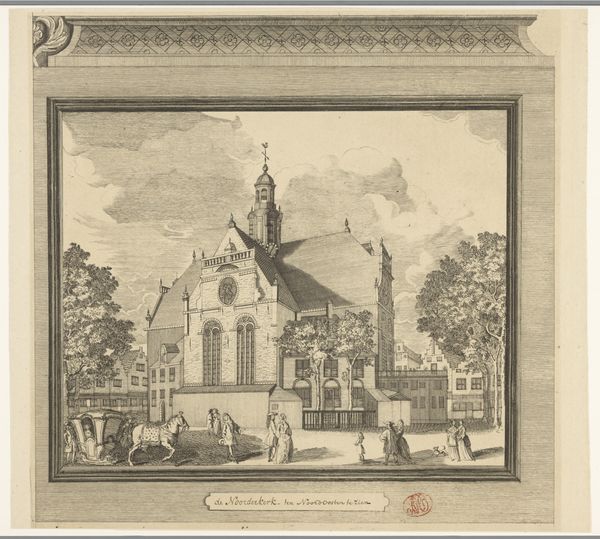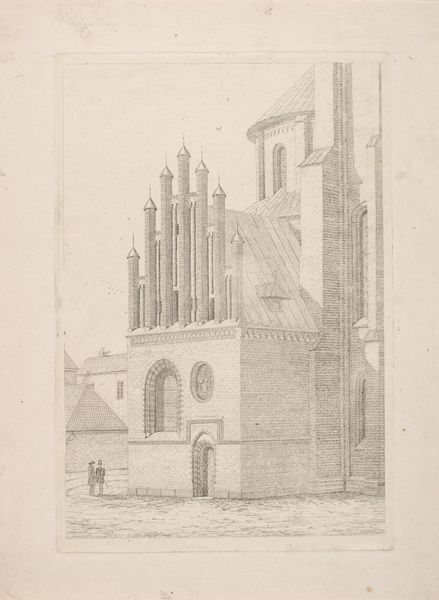
drawing, print, paper, ink, engraving, architecture
#
drawing
#
baroque
# print
#
paper
#
ink
#
line
#
cityscape
#
engraving
#
architecture
Dimensions: height 596 mm, width 451 mm
Copyright: Rijks Museum: Open Domain
Curator: This drawing from 1666, titled "Ontwerp voor de toren van de Nieuwe Kerk te Amsterdam," offers us a glimpse into a proposed, though ultimately unrealized, addition to Amsterdam’s cityscape. Rendered in ink, print, and engraving on paper, the design is credited to an anonymous artist. Editor: It has such an elegant, yet oddly unfinished feel. The meticulous detail in the church and its surroundings contrasts with the ethereal, almost detached quality of the tower design floating above. Curator: Indeed. This piece reflects the architectural ambitions of the time. Amsterdam was booming in the 17th century, a hub of commerce and culture, and grand structures like this new church tower were envisioned to represent that power. Its visual presence was designed to impress, speaking directly to Amsterdam’s cultural influence. Editor: So, was it a matter of money? Shifting political winds? Or perhaps simply a lack of public will? What halted this proposed expression of Baroque power? Curator: All plausible factors, no doubt, but perhaps also evolving tastes. While the Nieuwe Kerk exists, as you can see, the depicted bell tower design didn’t quite mesh with the evolving social and political values of the time, especially in its proximity to the royal palace, where the elite consolidated political power. Consider how art institutions shape taste, as they too express political intentions. Editor: I find that idea so provocative, how public spaces, architecture, and art mirror power dynamics, the dialogue between the imagined tower and its surroundings – a statement, rather than just brick and mortar. Curator: Precisely. It's a fascinating "what if," inviting us to consider how urban spaces reflect cultural values and political statements. The piece captures a specific moment in time, revealing both ambition and restraint. Editor: I'm left pondering the significance of unrealized visions—how they continue to shape our understanding of history, perhaps even more so than completed projects. Curator: And ultimately, a visual testament to a city's continuous transformation and complex dialogues.
Comments
No comments
Be the first to comment and join the conversation on the ultimate creative platform.




